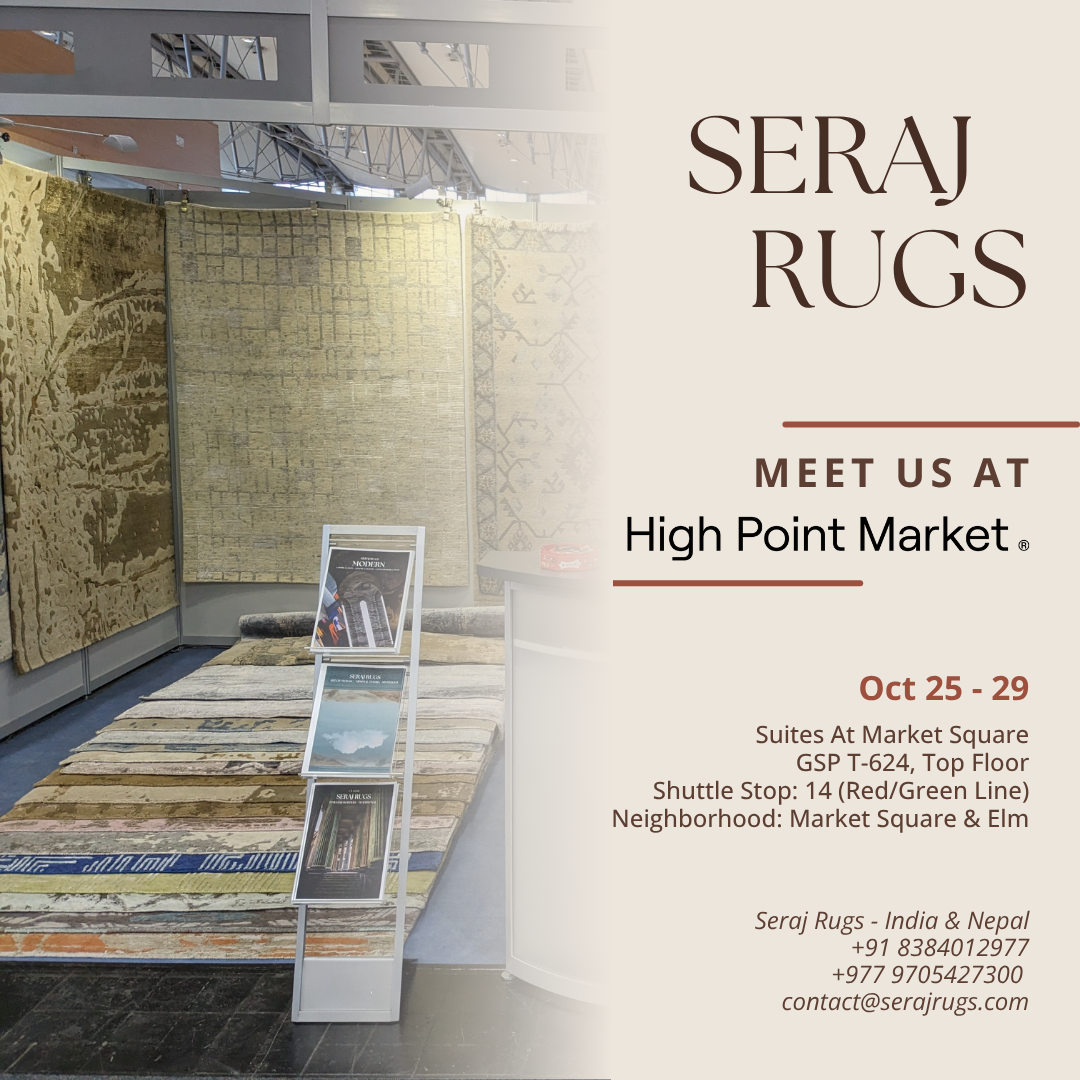If you’re looking to import handcrafted rugs from Nepal and bring exceptional value into the U.S. market, then shipping from Nepal to the United States can be a smart choice — especially when you partner with a quality manufacturer like Seraj Rugs. On their website we see that Seraj Rugs is a Nepal-based manufacturer specialising in bespoke, handmade rugs and carpets. Seraj Rugs Here’s how you can plan your import successfully, with special emphasis on why Seraj Rugs is a partner worth considering.
Why Choose Seraj Rugs for Your Rug Imports
When sourcing rugs from Nepal, you’ll want a supplier who provides consistency, craftsmanship and export-friendly support. Here’s why Seraj Rugs stands out:
- Seraj Rugs presents itself as a custom & handmade rug manufacturer with top-quality rugs from Nepal and India.
- Their site emphasises made-to-order, hand-knotted and hand-tufted rugs—and the ability for clients to customise design, materials and manufacturing.
- Their branding highlights crafting precision, timeless quality, quality material and a strong foundation of expertise.
- For U.S. importers, working with a manufacturer who is export-aware means smoother shipping, clearer documentation and fewer surprises.
So if you’re importing hand-knotted rugs from Nepal to the U.S., Seraj Rugs is well positioned to deliver the product, and you can focus on logistics, compliance and distribution.
Key Steps in Shipping Rugs from Nepal to the USA
Here’s a breakdown of how you can import rugs from Nepal (e.g., from Seraj Rugs) into the U.S., covering manufacturing, documentation, shipping, and customs.
1. Define Product & Order with Seraj Rugs
Begin with your design or selection. Seraj Rugs allows you to:
- Work with their design & expert call to bring your vision to life.
- Select the quality of materials (e.g., wool, silk blends, pile height, density).
- Agree on production timelines and packaging (rolls, crates, labeling).
2. Documentation for Export + U.S. Import
Exporting goods from Nepal to the U.S. means you’ll want correct paperwork. Some essentials include:
- Commercial invoice, packing list, certificate of origin, export licence (if required) for Nepal-based export.
- For U.S. importers, the shipment must comply with the customs entry process laid out by U.S. Customs and Border Protection (CBP).
- Importers should check tariff classification. For example, a hand-knotted rug from Nepal may fall under HTSUS code 5701.10.4000 and may be duty-free.
3. Shipping Method (Air vs. Sea)
- If your rugs are urgent, lower-volume or high-value, air freight may be appropriate.
- For bulk orders (e.g., container loads of rugs), sea freight offers cost-efficiencies. A logistics guide notes that shipments from Nepal to USA may involve trucking to a nearby port and then ocean freight.
- Packaging should protect rugs from moisture, crushing, and ensure safe transit to U.S. port of entry.
4. U.S. Customs & Clearance
- When the shipment arrives in the U.S., you’ll need to file entry documents with CBP. The guide from CBP covers how goods must be declared, duties determined, and what inspections might occur.
- If the rugs are hand-knotted and of wool/fine animal hair, duty may be zero. For example, one ruling indicated free duty for a hand-knotted 100% wool carpet from Nepal.
- Work with a U.S. customs broker to ensure correct HS/HTS classification, and to manage any inspections or compliance checks.
- Keep in mind that certain hand-knotted carpets are under prior Withhold Release Orders (WRO) for forced-labour concerns — it’s wise to ensure your supply chain is compliant.
5. Delivery & Distribution
Once customs clearance is complete:
- Arrange transport from the U.S. port to your warehouse or showroom.
- Inspect the goods on arrival to ensure quality: knot density, materials, finish, packaging. Since Seraj Rugs emphasises craftsmanship, you’ll want to verify to maintain your brand promise.
- Store and market your rugs—highlighting they are “hand-knotted in Nepal by Seraj Rugs” can add brand value.
Why This Strategy Works & Tips for Importers
- Value-added story: Hand-knotted rugs from Nepal (via Seraj Rugs) bring a unique narrative—artisan craftsmanship, custom design, premium materials.
- Competitive duty: If correctly classified, duty may be free or minimal—improving margin potential.
- Quality control: Working directly with a manufacturer like Seraj Rugs means you can influence design, material and lead time.
- Marketing advantage: Rug buyers in the U.S. appreciate provenance, authenticity and artisan value. Highlighting Nepal-handcrafted origin differentiates you in a crowded market.
Import-tips for best results:
- Request samples from Seraj Rugs before placing large orders.
- Clarify lead time, shipping terms (FOB, CIF, DDP) so you know who handles which leg of transit.
- Confirm the packaging is export-grade and labelled properly (country of origin, fibre content, size).
- Use a reliable freight forwarder familiar with Nepal-USA logistics.
- Ensure your U.S. customs broker has experience with rugs and textile floor coverings.
- On arrival inspect goods immediately; rectify any defects or mismatch in design.
- Build your marketing around the “custom handmade Nepal rugs” story to attract design-conscious buyers.
Closing Thoughts
Importing handmade, high-quality rugs from Nepal offers a strong opportunity—especially when you partner with a manufacturer like Seraj Rugs that emphasises craftsmanship, custom solutions and export-capability. By paying attention to documentation, shipping logistics and U.S. customs compliance, you can bring exceptional rugs into your U.S. business while differentiating your brand.

